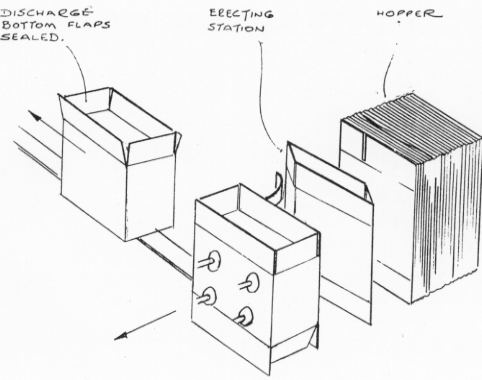Pkg Solutions
Quality Glossary
CASE ERECTING
Machinery to hold cases in the flat, feed one case,
form the case and tuck in the bottom flaps.
Most machines can also apply adhesive to the bottom
flaps and seal. A few machines can seal the base by the use of self adhesive
tape.
The majority of machines can be fitted with a discharge
conveyor onto which is attached a photo-electric cell. The machine then
operates only when a case is taken off the conveyor so that it effectively
works on demand. The common method of feeding and forming cases
is by vacuum although there are now one or two machines using a purely
mechanical method.
Cases can be discharged either upright or on the side.
Able to handle virtually all styles of corrugated case.
Speeds are from 10 - 50 per minute with the majority
of machines being limited to 15/20 per minute.

|
CASE DESIGN
All machines accept a standard case, usually 0201 / R.S.C
The limitations are usually on case proportions and
cases with a low height in proportion to length and width can cause problems
and should be checked with the machine manufacturer.
The majority of problems on case erectors occur when
the inner flaps are being folded and is due to the inner flap fouling
the outer when the actual case slot is offset from the bend. One or two
machines do fold out the outer flaps before the inner is folded in to
avoid the problem. Many manufacturers insist on 10/11 mm wide slots. Cases
manufactured out of square can cause similar problems.
Cases with all flaps meeting may cause problems. |